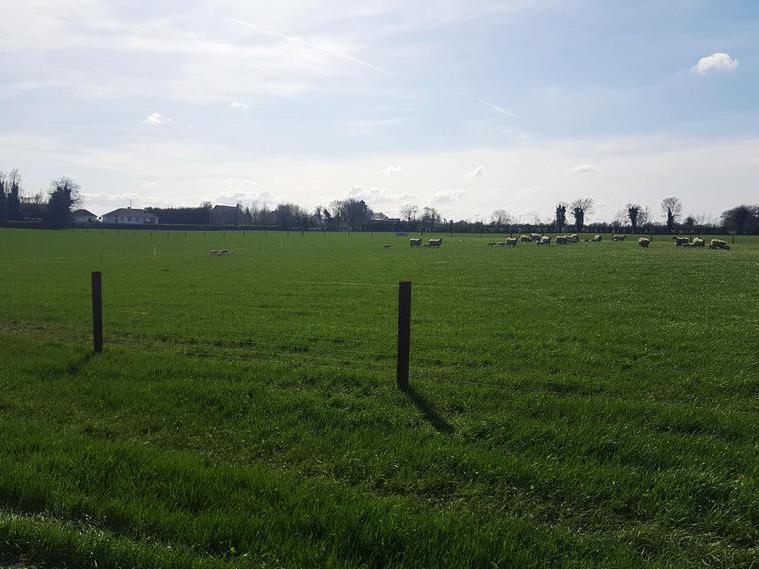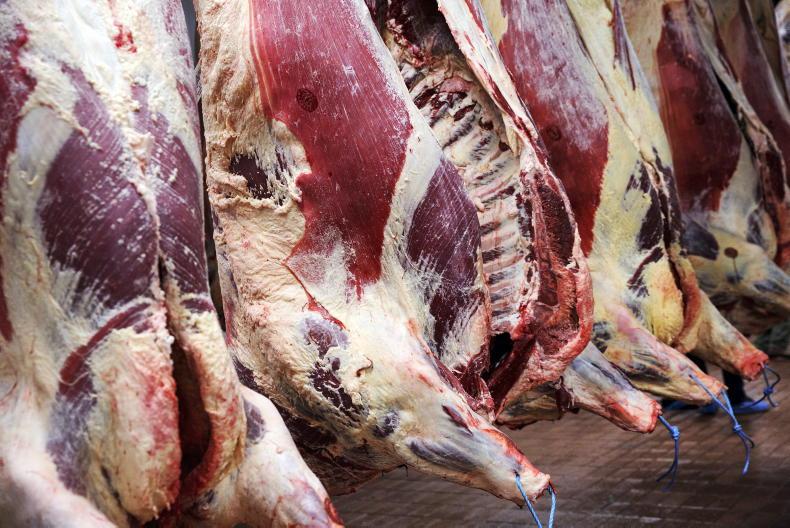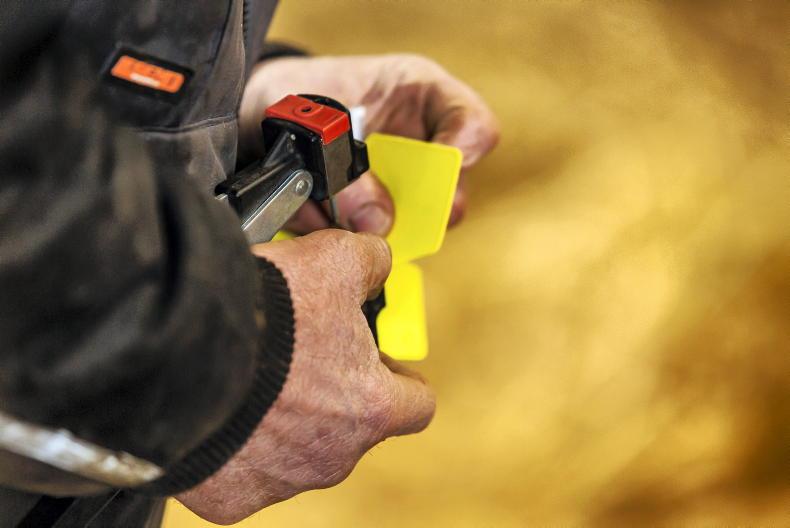Grass growth has finally taken off on Tullamore Farm over the past two weeks with 64kg/DM/ha/day being recorded on the 17 April and a further 48kg of growth being recorded on 23 April. This is up from 10kg of growth which was recorded on 10 April 2018. This has meant swift action was needed over the past 10 days getting stock out to grass to increase demand. Demand was running at 11kg/DM/day on 10 April and this has increased to 31kg/DM/ha/day as a result of closing up a further 30ac for silage and getting more stock outdoors. Average farm cover is back up to 613kg/DM/ha which has doubled in the last two weeks. The farm is currently stocked at 1,311kg/DM/ha and the plan is to turn out more yearling heifers this week to increase demand further and also close up more paddocks for silage. There are currently 67 cows and calves, 45 maiden heifers and 160 ewes and lambs grazing in six different groups.
Grazing plan
The grazing plan for 2018 is to run five groups of stock on the farm with three of these groups consisting of cattle and sheep. In 2018, there is 7.38ha out for reseeding which includes the kale area which is due to go back to grass as soon as possible.
This will mean a higher grazing stocking rate for May and June with the reseeded paddocks coming back in for grazing in July and this will reduce grazing stocking rate accordingly.
Table 1 outlines the plans for each group of stock, stocking rate and number of paddocks for each group.
Demand is calculated with ewes at 70kg and consuming 3kg/DM/day and cows weighing 700kg and consuming 13kg/DM/day. As the season progresses calves will start to eat grass and these will have to be factored in from July onwards. This will coincide with reseeded paddocks coming back into rotation.
It is anticipated that some of the lower stocked grazing areas will have silage taken out where grazing covers get too strong.
Silage requirements for 2018
This year has taught us a lesson in terms of having enough silage on the farm for a spring like 2018. While the farm had enough silage, it was anticipated to have more silage left over than we have at the moment. It’s estimated that the farm will have 125t of silage left over to carry into next winter. The farm requires 1,200t of silage to meet its winter feed requirements for 2018/2019.
There is currently 47ac closed up and fertilised with a further 14ac to be closed by the end of the week. Taking 9% of the land area out for reseeding this spring has meant a higher grazing stocking rate than normal. Ten acres of this area is our kale paddocks which will be reseeded as soon as possible and the other 8ac is very rough grazing that was reclaimed in autumn 2017 and will be put back into production as soon as ground conditions allow. The remaining 25ac of old pasture will be grazed until August and then reseeded.
Fertiliser
The key to driving the high-grazing stocking rate on the farm will be reseeded swards (80% reseeded to date) and fertiliser applications.
There are currently 80 units of N spread across the farm in the form of Urea and CAN over the past two months.
The next round of fertiliser will be applied next week with a round of 18:6:12 being spread to try and increase low P and K levels in some paddocks. Slurry has also been applied to paddocks low in P and K with more slurry due to be applied after first-cut silage.
Breeding starting in heifers on 25 April.Breeding starting in cows on Monday, 1 May.Turnout cows as they calve.Reapply scratch cards to all cows and heifers.Fertiliser to be spread on grazing paddocks (one bag 18:6:12/acre).Fertility test stock bulls.Walk the farm weekly to do grass budget and take appropriate action.
Grass growth has finally taken off on Tullamore Farm over the past two weeks with 64kg/DM/ha/day being recorded on the 17 April and a further 48kg of growth being recorded on 23 April. This is up from 10kg of growth which was recorded on 10 April 2018. This has meant swift action was needed over the past 10 days getting stock out to grass to increase demand. Demand was running at 11kg/DM/day on 10 April and this has increased to 31kg/DM/ha/day as a result of closing up a further 30ac for silage and getting more stock outdoors. Average farm cover is back up to 613kg/DM/ha which has doubled in the last two weeks. The farm is currently stocked at 1,311kg/DM/ha and the plan is to turn out more yearling heifers this week to increase demand further and also close up more paddocks for silage. There are currently 67 cows and calves, 45 maiden heifers and 160 ewes and lambs grazing in six different groups.
Grazing plan
The grazing plan for 2018 is to run five groups of stock on the farm with three of these groups consisting of cattle and sheep. In 2018, there is 7.38ha out for reseeding which includes the kale area which is due to go back to grass as soon as possible.
This will mean a higher grazing stocking rate for May and June with the reseeded paddocks coming back in for grazing in July and this will reduce grazing stocking rate accordingly.
Table 1 outlines the plans for each group of stock, stocking rate and number of paddocks for each group.
Demand is calculated with ewes at 70kg and consuming 3kg/DM/day and cows weighing 700kg and consuming 13kg/DM/day. As the season progresses calves will start to eat grass and these will have to be factored in from July onwards. This will coincide with reseeded paddocks coming back into rotation.
It is anticipated that some of the lower stocked grazing areas will have silage taken out where grazing covers get too strong.
Silage requirements for 2018
This year has taught us a lesson in terms of having enough silage on the farm for a spring like 2018. While the farm had enough silage, it was anticipated to have more silage left over than we have at the moment. It’s estimated that the farm will have 125t of silage left over to carry into next winter. The farm requires 1,200t of silage to meet its winter feed requirements for 2018/2019.
There is currently 47ac closed up and fertilised with a further 14ac to be closed by the end of the week. Taking 9% of the land area out for reseeding this spring has meant a higher grazing stocking rate than normal. Ten acres of this area is our kale paddocks which will be reseeded as soon as possible and the other 8ac is very rough grazing that was reclaimed in autumn 2017 and will be put back into production as soon as ground conditions allow. The remaining 25ac of old pasture will be grazed until August and then reseeded.
Fertiliser
The key to driving the high-grazing stocking rate on the farm will be reseeded swards (80% reseeded to date) and fertiliser applications.
There are currently 80 units of N spread across the farm in the form of Urea and CAN over the past two months.
The next round of fertiliser will be applied next week with a round of 18:6:12 being spread to try and increase low P and K levels in some paddocks. Slurry has also been applied to paddocks low in P and K with more slurry due to be applied after first-cut silage.
Breeding starting in heifers on 25 April.Breeding starting in cows on Monday, 1 May.Turnout cows as they calve.Reapply scratch cards to all cows and heifers.Fertiliser to be spread on grazing paddocks (one bag 18:6:12/acre).Fertility test stock bulls.Walk the farm weekly to do grass budget and take appropriate action. 









SHARING OPTIONS